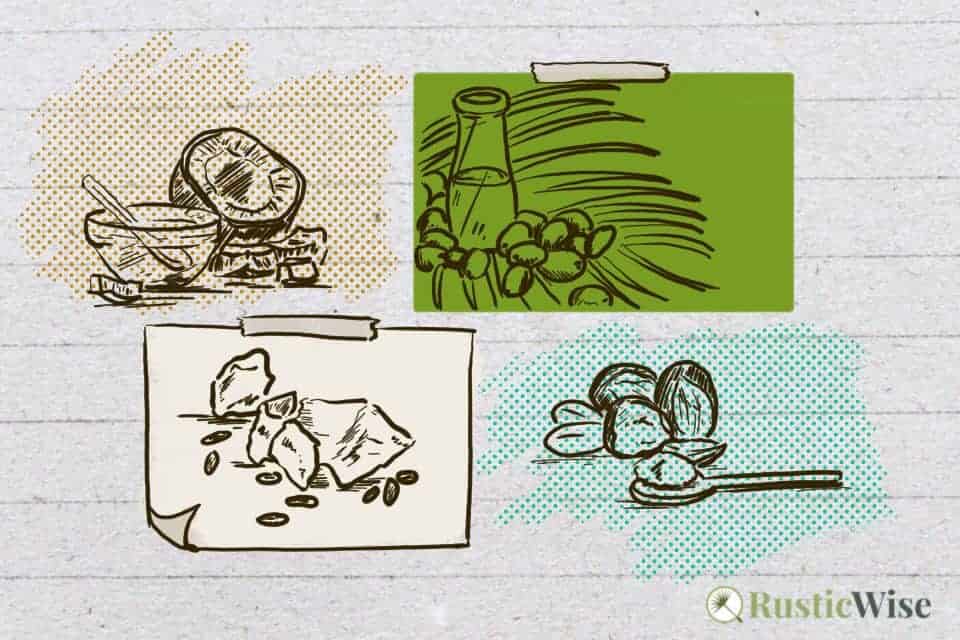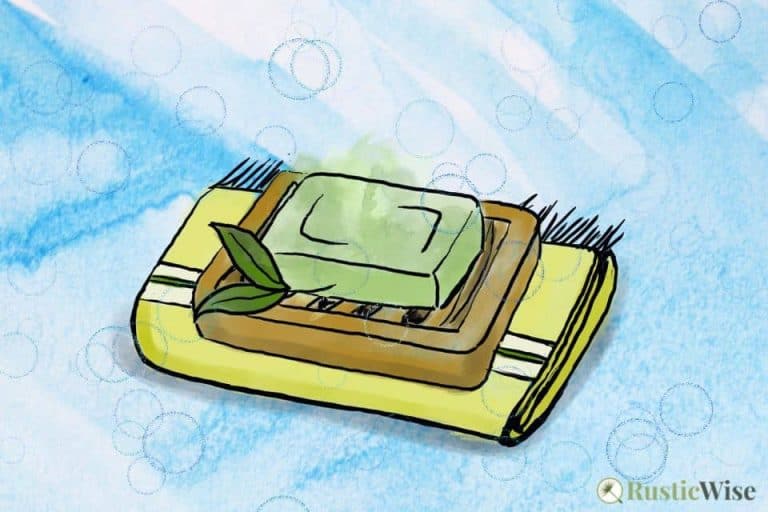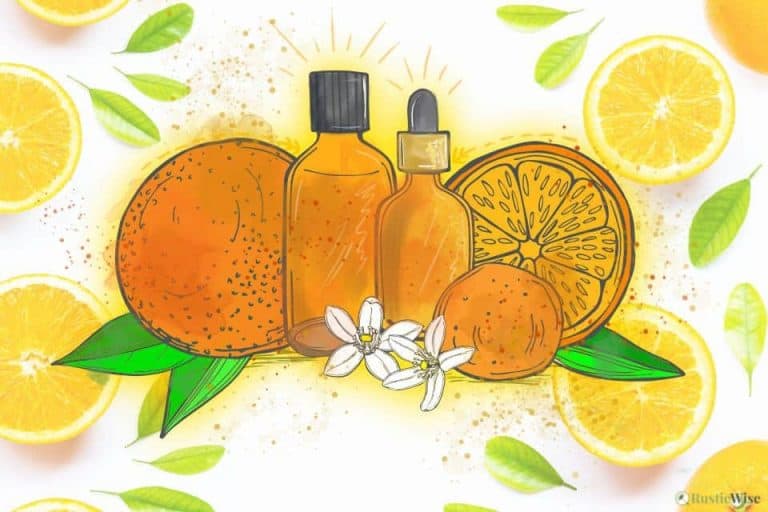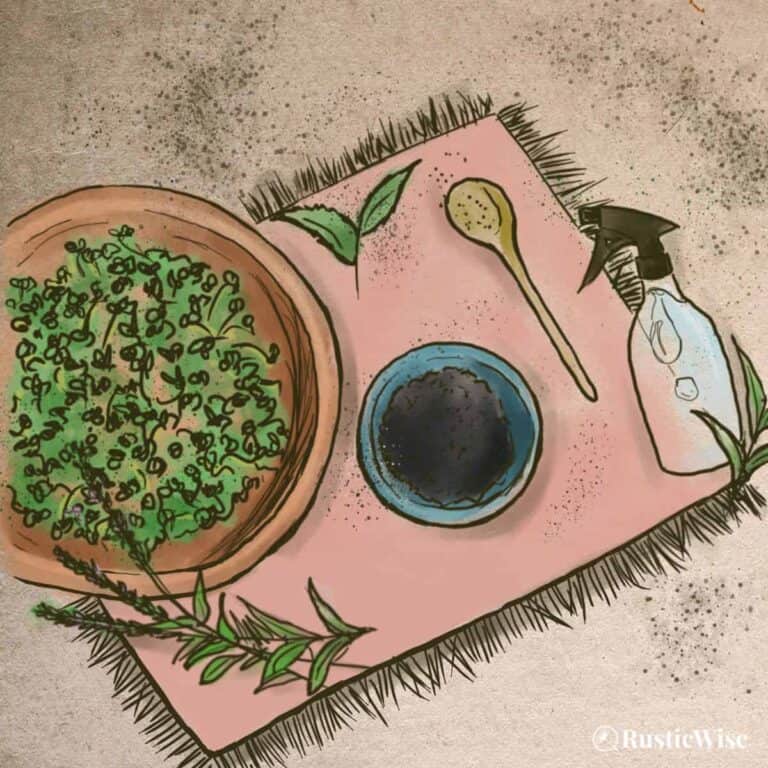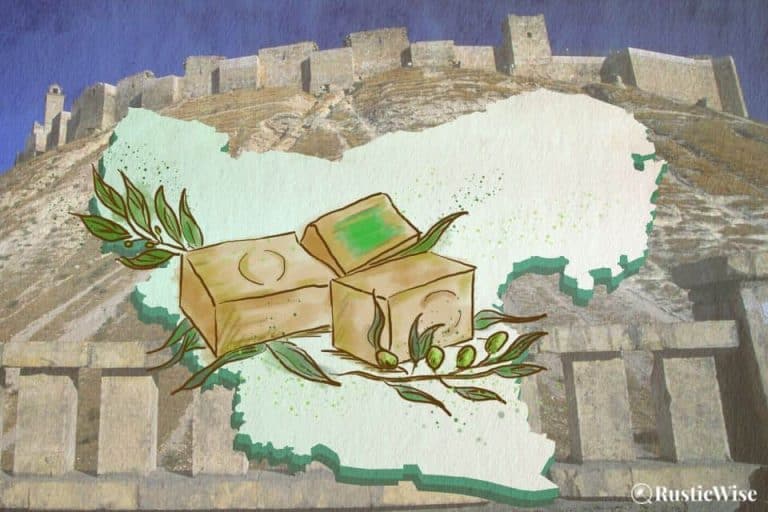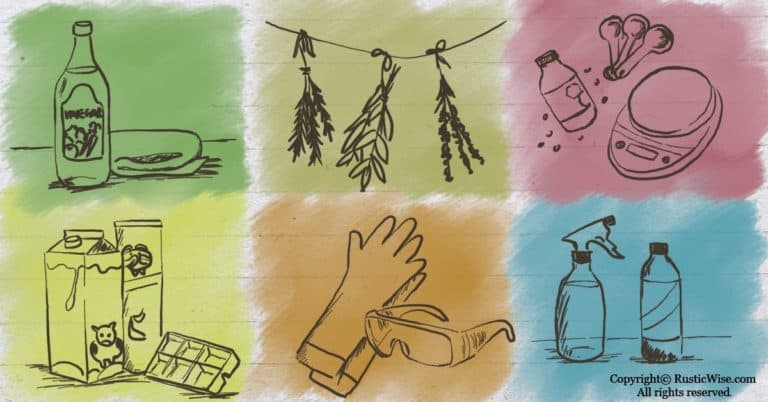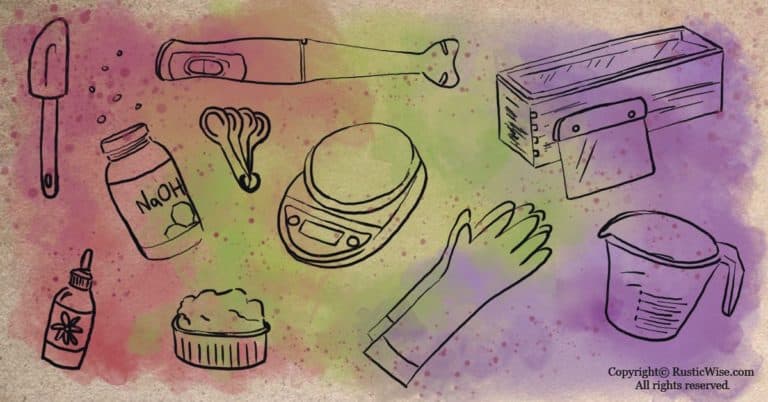Best Hard Oils for Soap Making (Plus Brittle Oils Too!)
RusticWise is supported by its readers. When you purchase through links on our site, we may earn an affiliate commission. As an Amazon Associate, we earn from qualifying purchases. Thank You!
Hard oils for soap making are those that are solid at room temperature, such as coconut oil, cocoa butter, palm oil, and shea butter. These hard oils each have unique properties, but tend to create harder bars of soap. Soft oils, on the other hand, are liquid at room temperature and make for softer soap bars. Examples of soft oils are avocado oil, olive oil, and sunflower oil.
If you’ve recently made a batch of soap that turned out too soft, there are several reasons that may have caused this. Learning more about hard oils and their properties will help you make a better, longer lasting bar of soap.
Read on to check out a hard oils list and how to use them in soap making.
What’s the difference between soft, hard, and brittle oils?
In the world of soap making, oils, butters, and fats fall under three categories:
- Soft oils;
- Hard oils; and,
- Brittle oils.
Soft oils are liquid at room temperature. Examples include avocado oil, castor oil, olive oil, safflower oil, and sunflower oil. These types of oils take longer to reach trace and, when used in greater amounts, make soft soaps.
Hard oils are solid at room temperature. Examples are coconut oil, and butters, such as shea butter and mango butter. Generally, hard oils produce harder bars of soap. You’ll need to scoop and melt hard oils while soaping. Since you need to fully melt hard oils to use for soaps, this requires soaping at higher temperatures.
Brittle oils are “harder” than hard oils. We reserve this special category for oils that must be picked or chiseled away at from the container. This includes palm kernel oil and cocoa butter. Brittle oils are quick to set and cure, and easier to remove from molds, especially individual silicone molds.
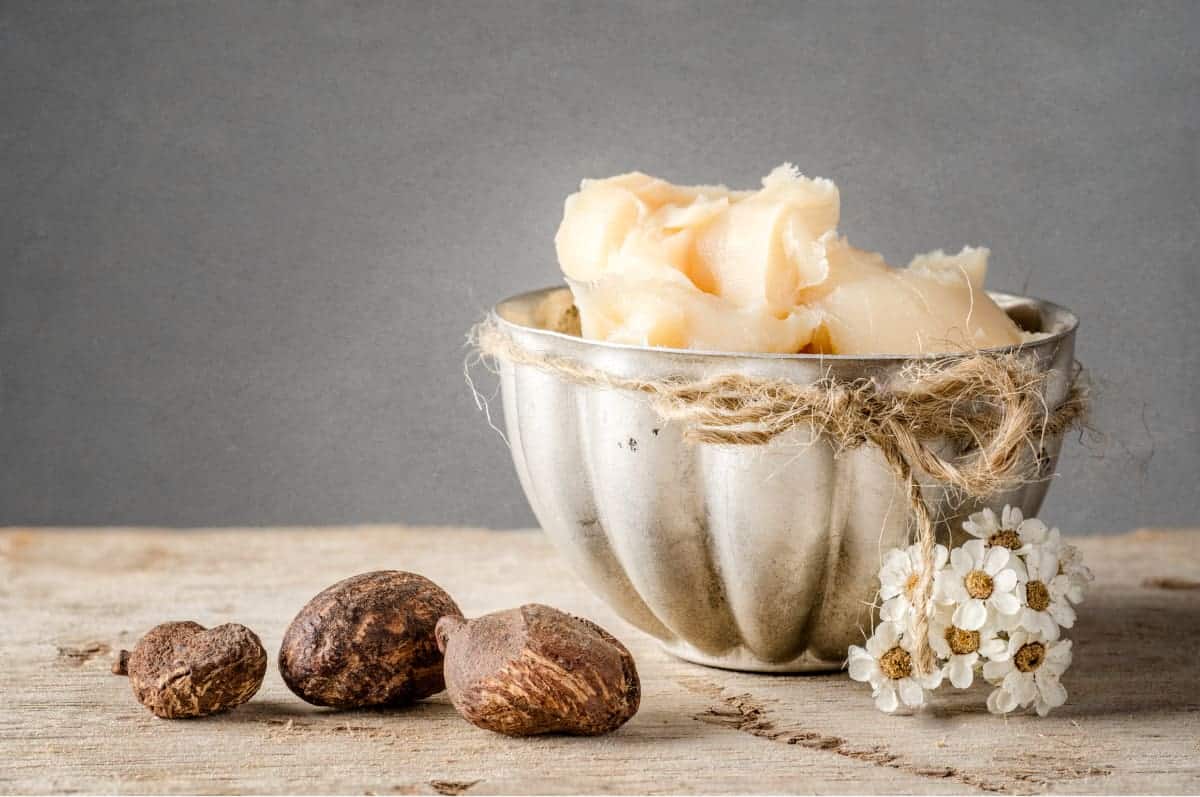
Saturated fatty acids make harder bars of soap
If you’re wondering what makes hard oils stay solid at room temperature, it’s because they are higher in saturated fatty acids.¹ All fats are made of varying levels of saturated, monounsaturated fat, and polyunsaturated fat.
As you can see in the chart below, those higher in saturated fats are considered hard oils in soap making.
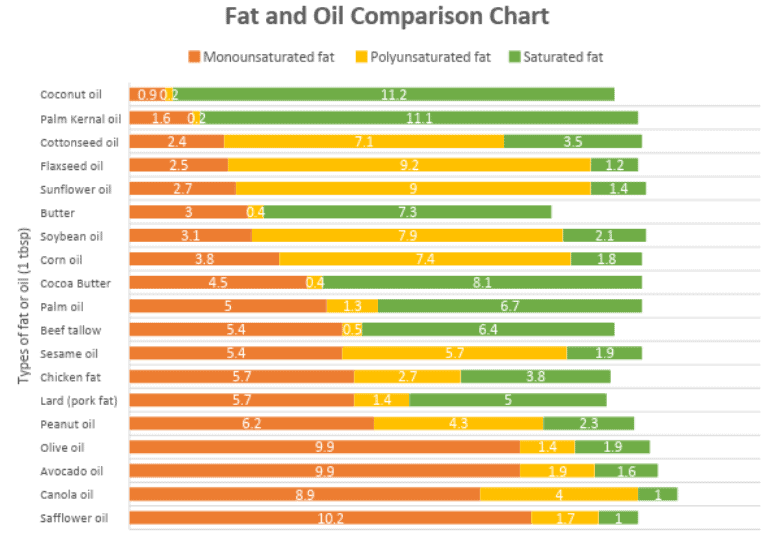
At a molecular level, saturated fats have a zig-zag structure that allows them to stack neatly on top of one another, which makes them more solid, and hence, the finished soap harder.
Every oil, fat, or butter has a unique fatty acid profile. For a more in-depth look at saturated and unsaturated fatty acids, check out our article about using vegetable oils in soap.
Best hard oils for soap making
Want to know the best hard oils for soap making? While there are differing opinions on what constitutes the “best” hard oil, a few commonly used hard oils are coconut oil, cocoa butter, palm oil, and shea butter. These vegetable-based oils contribute to a harder bar of soap when used in higher amounts.
Palm oil is controversial as it’s linked to deforestation and loss of natural habitat. If you’re planning on using palm oil, check that it’s ethically sourced (RSPO-certified).
Tallow and lard are also considered hard oils (and produce nice soaps), although many people choose to steer clear of animal-based fats for personal reasons.
Check out our hard oils list below. The numbers show the strength of a particular quality of the soap. For instance, babassu oil has a hardness of 85, which means it is a harder oil than lard which has a hardness of 42.
Table of Hard Oil Properties for Soap
| Hardness | Cleansing | Bubbly Lather | Creamy Lather | Conditioning | |
|---|---|---|---|---|---|
| Coconut oil (76 degree) | Yes (79) | Yes (67) | Yes (67) | 12 | 10 |
| Palm oil | Yes (50) | 1 | 1 | Yes (49) | Yes (49) |
| Shea butter | Yes (45) | 0 | 0 | Yes (45) | Yes (54) |
| Lard | Yes (42) | 1 | 1 | Yes (41) | Yes (52) |
| Tallow (beef) | Yes (58) | 8 | 8 | Yes (50) | Yes (40) |
| Mango butter | Yes (49) | 0 | 0 | Yes (49) | Yes (48) |
| Kokum butter | Yes (60) | 0 | 0 | Yes (60) | Yes (37) |
| Illipe butter | Yes (62) | 0 | 0 | Yes (62) | Yes (35) |
| Sal butter | Yes (50) | 0 | 0 | Yes (50) | Yes (42) |
| Babassu oil | Brittle (85) | 70 | Yes (70) | 15 | 10 |
| Palm kernel oil | Brittle (75) | Yes (65) | Yes (65) | 10 | 18 |
| Cocoa butter | Brittle (61) | 0 | 0 | Yes (61) | Yes (38) |
Coconut oil
Available in 76 degree, 92 degree, and fractionated (liquid) varieties. The numbers show the melting point (in Fahrenheit) of the coconut oil. The 76 degree variety is widely available and commonly used for soap making.
Soap properties: Coconut oil produces a hard bar of soap and a strong, fluffy lather. It’s high on the cleansing scale—if used in large amounts, it can strip the skin of healthy natural oils. While you can use up to 100 percent of coconut oil for your oils, it’s best to mix with soft oils for a more nourishing bar of soap. Aim for a maximum of 50 to 60 percent of your oils.
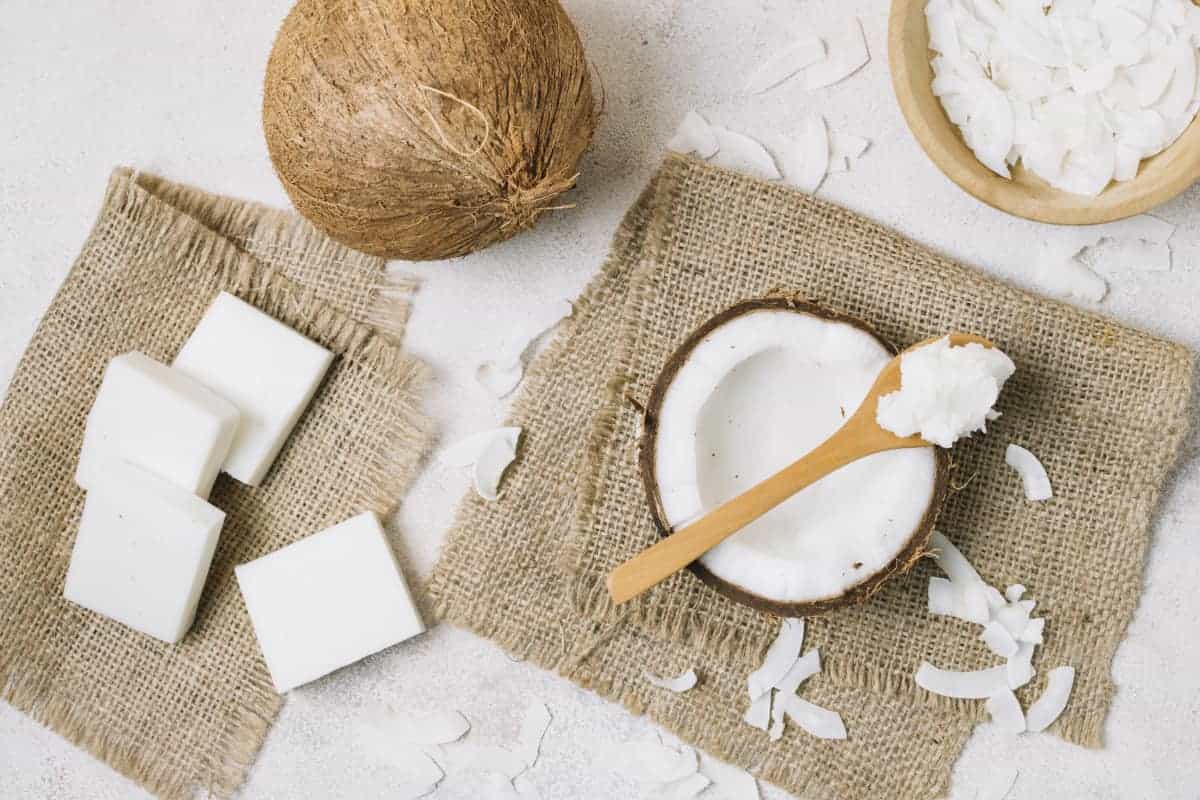
Palm oil
There’s a reason palm oil is one of the most common ingredients used commercially to make soap: it creates a lovely creamy lather and hardness to soap. It works much the same as lard or tallow in soap. The downsides, as we mentioned above are of course palm oil’s link to deforestation and habitat loss. Look for ethically sourced suppliers of palm oil.
Soap properties: Palm oil lends a long lasting creamy lather with conditioning properties and hardness to soap. While you could use up to 100 percent for your oils, the sweet spot is somewhere between 20 and 30 percent.³
Shea butter
A common ingredient for moisturizing lotions and skin products, soap makers covet shea butter for its deeply nourishing and emollient qualities. Shea butter comes from seeds of the African karite tree. It’s also an excellent source of vitamins A and E. Look for unrefined shea butter for soap making—it has a slightly nutty fragrance.
Soap properties: Shea butter lends a luxurious, creamy quality to soap with medium-hardness. It’s also a good choice for a superfat. Use up to a maximum of 20 percent of your oils.
Lard
For those of you who don’t want to use animal-based fats, you can skip over these next two sections on lard and tallow. Lard mostly comes from the fatty tissue around the kidneys of pigs. Homesteaders have been rendering fat for generations to make a basic soap comprising homemade lye and lard.
Soap properties: Lard makes for a hard bar of slippery soap with low lather. Lard makes slightly softer soap than tallow. You’ll get a white bar of soap when using lard. Although you can make a bar of soap with 100 percent lard for the oils, it’s best when combined with other vegetable oils. Aim for up to 50 percent lard for your oils.
Tallow (beef)
While you can use tallow from goat, sheep, bear, or deer, beef tallow is the most commonly used for soap. Beef tallow produces a slightly harder bar of soap than lard.
Soap properties: Beef tallow has similar properties to lard: it creates a low lathering soap with conditioning properties. It too, makes for a whiter bar of soap. You can make a bar of soap with 100 percent tallow, but like lard, it’s best when mixed with other vegetable oils. Use up to 50 percent tallow for your oils.
You might like
Mango Butter All Natural 5LB Bulk, Naturally Refined
- 100% pure mango body butter that’s wild-harvested and naturally refined—fully tested and non-GMO.
- Mango butter is effective in preventing inflammation and itching caused by dry skin.
- Fairly traded mango seeds sourced from sustainable co-ops in India.
Found on Amazon
Check Current Price
Those in Canada and the UK should be taken to the product listing in your region.
Mango Butter
An exotic golden, grainy fat, that is extracted from the mango seed. Mango butter feels great on the skin. With its highly moisturizing and conditioning properties, mango butter is commonly used in skincare products too and works well for those with sensitive skin.
Soap properties: With a fairly long shelf life (up to 2 years), mango butter adds a silky and luxurious quality to soaps along with hardness. You can also use mango butter as a superfatting agent. Use up to 20 percent mango butter in your oils.
Kokum Butter
Made from the extracted oil of the kokum seed, kokum butter is moisturizing, yet lightweight.
Soap properties: If you’re looking for a moisturizing ingredient that doesn’t feel greasy, kokum butter delivers. It makes for a harder bar of soap, but avoid using too much as it’s high in stearic acid (around 56 percent) and can cause soap to reach trace in a flash. Keep kokum butter to between 5 and 10 percent of your oils.
Illipe butter
Illipe butter is from the nut of the Shorea stenoptera tree. An exotic butter that’s similar to cocoa butter, it has a higher melting point and makes for a slightly harder bar of soap. Illipe butter has skin protecting properties and is often used to soothe sunburn.
Soap properties: Illipe butter creates a harder bar of soap than cocoa butter and is very creamy. Also high in stearic acid, illipe butter is quick to trace. Keep the amount of illipe butter to 15 percent or less.
Sal butter
Made from the fruit seeds from the Sal tree (Shorea Robusta) of India, sal butter is an exotic oil used to soothe, soften, and condition skin and hair. Sal butter is a dark green color (although the hue may vary slightly).
Soap properties: Also high in stearic acid, sal butter should be used in small amounts to avoid quick trace (up to 5 percent). Sal adds hardness to soap, along with conditioning properties.
Brittle oils:
Characterized by their very solid state (harder than hard) at room temperature, let’s look at three brittle oils used in soap making.
Babassu Oil
Made from the seeds of the babassu palm tree, babassu oil is a rich oil that’s also noncomedogenic (doesn’t clog pores). With similar properties to coconut oil, babassu oil is often used as a substitute for those with coconut allergies.
Soap properties: Babassu oil helps to soothe dry, itchy skin. This oil creates a white bar of soap with hardness and strong cleansing properties. Use for up to 30 percent of your oils.
Palm Kernel Oil
PKO is a very nourishing oil when used in soap as it produces a lot of glycerin (an emollient). Palm kernel oil is also another substitute for coconut oil as it has similar cleansing properties with higher hardness.
Soap properties: Palm kernel oil makes a hard, durable bar of soap with fluffy bubbles. Use up to 30 percent PKO in your soap recipe.
Cocoa butter
A perennial favorite amongst soapmakers and DIYers, cocoa butter provides rich moisturizing properties. Its fragrant cocoa scent is also a bonus!
Soap properties: While extremely brittle in the container, cocoa butter melts upon skin contact. It makes for a hard bar of soap with a creamy, stable lather. Use up to 15 to 20 percent in your oils.
What is the difference between palm oil and palm kernel oil?
Don’t confuse palm oil with palm kernel oil (PKO). Palm oil is the pressed oil of the palm fruit, while PKO comes from the extracted oil of the palm seed.
Palm oil is made of roughly 50 percent saturated fat, while PKO is comprised of up to 80 percent.⁴ This means PKO has a higher melting point—it’s a much more brittle oil than palm oil. PKO will make harder bars of soap.
What is the percentage of hard oil to use in soap making?
Most soap makers use a combination of hard and soft oils to craft their soap bars. Aim for a ratio of 60 percent hard oil to 40 percent soft oil in your cold process soap recipe.⁵ This strikes a good balance between effective cleaning while still nourishing the skin.
Here’s an example of a soap recipe using a combination of hard and soft oils:
Use 60 percent hard oils:
- 20 percent coconut oil (bubbly lather)
- 20 percent shea butter (conditioning)
- 20 percent cocoa butter (creamy lather)
Don’t forget to add 40 percent soft oils:
- 30 percent olive oil (stable lather plus nourishing/conditioning)
- 5 percent avocado oil (nourishing/conditioning)
- 5 percent castor oil (creates bubbles)
How hard and brittle oils affect soap
A guideline to remember is that hard and brittle oils make for harder bars of soap that are easier to unmold than soaps made from softer oils.
Here are a few things to keep in mind when working with a higher proportion of hard or brittle oils:
- Quick to set and harden
- Easier to unmold (especially when using individual silicone molds)
- Difficult to create complicated swirls or complex designs
- Higher melting points require soaping at higher temperatures, around 110 degrees Fahrenheit (43 degrees Celsius)
Tips for making a harder bar of soap
If you’re looking to boost the hardness of your next batch of handmade soap, here are a few tips:
- Increase the percentage of hard oils: Try using a few hard or brittle oils in a slightly higher amount. Coconut oil, palm kernel oil, and cocoa butter are a few good ones to try.
- Add beeswax: When added in a small amount (around 1–2 percent), beeswax helps to increase hardness in soap. Avoid adding too much, though. Too much beeswax can create a sticky texture and decrease lather.
- Add stearic acid: A naturally occurring type of saturated fatty acid, stearic acid is great for increasing hardness in soap while also providing a rich, luxurious lather. Stearic acid also has cleansing properties that are ideal for cleaning skin. Use about 0.5 percent stearic acid in your soap recipe.⁶
- Add sodium lactate: Sodium lactate is liquid salt derived from plant-based sugars. It helps to create a harder, longer lasting bar, while also making umolding a breeze. In cold process soap, add about 1 teaspoon of sodium lactate per pound of soap; add to lye solution once cooled.⁷
Related questions
Is rice bran oil a hard oil?
No, we consider rice bran oil a soft oil as it’s liquid at room temperature. It has similar properties to olive oil in soap. Rice bran oil is extracted from the outer layer of rice. Like olive oil, rice bran oil is also considered a conditioning oil that helps to produce a mild lather in your soap bars.
What are some lathering hard oils?
If you’re looking to add some bubbly lather to your soap batch with hard oils, try using coconut oil, babassu oil, or palm kernel oil. Coconut oil is considered a hard oil, while babassu oil and palm kernel oil are brittle oils.
New to making soap? 🧼❓
👉We have a fantastic overview on the whole soapmaking process here: read our Timeless Guide To Soapmaking.
If you would like to see our soapmaking posts organized by topic type, see our Soapmaking Collection.
Would you like more timeless tips via email?
Fun tips to help you live an independent, self-sustaining lifestyle. Opt-out at any time.


References
- Gatewood, Jody (06 July 2021). “Solid fats and oils: What’s the difference?“, Iowa State University. Accessed November 2021.
- SoapCalc, Soap Calculator, http://soapcalc.net/calc/SoapCalcWP.asp. Accessed November 2021.
- Grosso, Alicia (2016). DIY Artisanal Soaps: Make Your Own Custom Handcrafted Soaps! Adams Media. pp. 177-178. ISBN 978-1-4405-9408-3.
- Eating Well, Palm Oil vs. Palm Kernel Oil, https://www.eatingwell.com/article/290687/palm-oil-vs-palm-kernel-oil/. Accessed November 2021.
- Essential Depot, Hard vs Soft Oils – Soap Making (video), https://www.youtube.com/watch?v=GNBg13JTra4. Accessed November 2021.
- New Directions Aromatics, All About Stearic Acid, https://www.newdirectionsaromatics.com/blog/products/all-about-stearic-acid.html. Accessed November 2021.
- Nurture Soap, Sodium Lactate, https://nurturesoap.com/products/sodium-lactate. Accessed November 2021.

Author: Theresa Tesolin
Theresa is co-founder of RusticWise. She helps people unleash their inner DIY spirit by encouraging them to get dirty and make or grow something from scratch.

